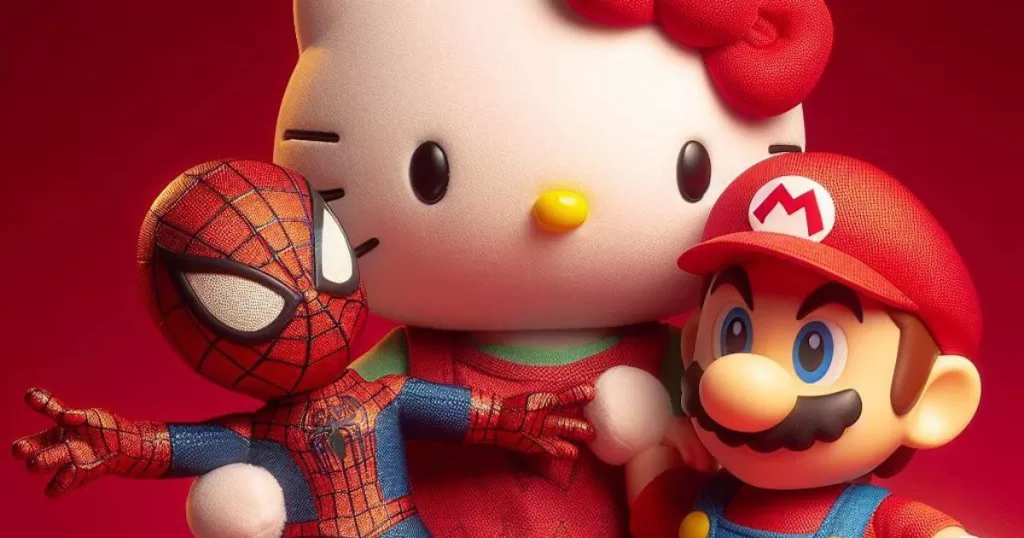Hello Kitty: The Stealth Cash Cow of Global Merchandising
Hello Kitty has been around since 1974, created by the Japanese company Sanrio as a cute cartoon cat character to adorn merchandise targeted at young girls. But in the nearly 50 years since her creation, Hello Kitty has grown into a global phenomenon, generating over $89 billion in total lifetime revenue. This puts the mouthless white cat’s lifetime earnings well above those of mega-franchises like Super Mario and Harry Potter series COMBINED.

How did a simple cartoon character with no backstory become so absurdly popular and lucrative?
According to journalist Trung Phan, writing for his Substack publication SatPost, Hello Kitty’s beginnings trace back to Sanrio founder Shintaro Tsuji. Tsuji was determined to create a character that could achieve similar worldwide fame and success as Mickey Mouse.
Hello Kitty was envisioned as Sanrio’s flagship mascot, and Tsuji smartly ensured the company owned full copyrights to the character and image to allow for extensive merchandising and licensing opportunities.
The iconic Hello Kitty image itself—created by designer Yuko Shimizu—is internationally recognizable, featuring simple elements like a red bow, whiskers, and distinctive ears. But perhaps most iconic is Hello Kitty’s blank, emotionless face. Unlike expressive Disney characters, Hello Kitty’s lack of a mouth makes her something of a blank slate.
People can imprint whatever feelings or personality they desire onto the cute cat. Additionally, while characters like Mario and Harry Potter thrive on expansive worlds and storylines that captivate fans, Hello Kitty succeeds on sheer image recognition and kawaii cuteness appealing to young girls.
Hello Kitty also benefited greatly from circumstances and trends specific to Japan that primed the culture for her debut. In particular, the rise of Japanese teen consumer culture and “gift-giving” obsession in the 1970s created the perfect storm.
Affordable and cute Sanrio trinkets and stationary Goods became popular “fanshii guzzu” teen girl purchases. Their low prices also made them ideal friendship gifts frequently exchanged among young peer groups.
On top of uniquely Japanese cultural trends, Hello Kitty’s global expansion also aligned with Japan’s own economic boom and the Ministry of Foreign Affairs’ “Cool Japan” soft power campaign in the late 1900s. Hello Kitty became a cultural bridge that let people around the world feel connected to modern Japanese pop culture. By the 1990s and 2000s, Hello Kitty’s brand recognition was immense, aided by Sanrio’s theme parks, celebrity endorsements, and collaborations with brands like McDonald’s.
Flash forward to 2022, and many view Hello Kitty as old news. However, by generating nearly $90 billion in total sales since 1974, she handily beats world famous franchises like Super Mario, Winnie the Pooh, and the Harry Potter series. Mario only passed $48 billion in lifetime game sales in 2022, while the highest grossing film franchise ever, the Marvel Cinematic Universe, sits at $38 billion total box office revenue.
Meanwhile, despite no hit movies, tv shows, or video games, Hello Kitty continues chugging along primarily on global merchandising efforts. In fact, the licensing alone for the mouthless cat accounts for over $8 billion in sales annually even today.
So while nowhere near as culturally embedded in today’s zeitgeist, this children’s cartoon cat born in Japan 50 years ago has shockingly built a financial empire that dwarfs even the most popular franchises in movies, books, and gaming today.
It seems under-appreciating Hello Kitty’s earning power is quite an easy mistake to make! But the next time you come across a piece of pink Hello Kitty merchandise in a young girl’s room, remember that little cat is quietly funding an $89 billion (and counting!) business empire spanning the globe.